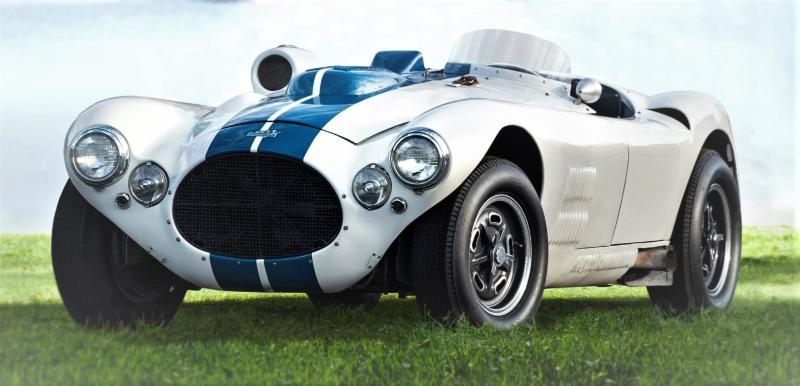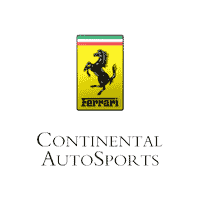Once Upon A Wire Wheel
The following is the fourth in a series of articles recalling highlights from the Region’s beginnings through the first 50 years. This was written by Bernie & Norm Koglin with input from Fred Wacker, Bud Seaverns, and Burdie Martin to name a few. Look for more articles though out the year. Have fun exploring the past and how it relates to now.

THE GREAT RACE ERA BEGINS … 1967 – 1971
On January 25, 1967 The Chicago Region sponsored the premiere of the movie GRAND PRIX for the benefit of the Illinois Epilepsy League (IEL). A black-tie dinner preceded the film showing, and at the theater some of our region officials and several IEL people were interviewed by television and radio news personalities. Good publicity for the Charity and for the Region. Next we were invited to participate in the Chicago Automobile Show. Jim Cain, an active member, racecar driver and regular Piston Patter contributor, chaired this activity. Jim, Bert Eisenhour and others rounded-up an impressive array of cars including the Meister-Brauser Scarab, a McKee Mk. VI, an Elva McClaren Ford, a 427 Cobra and more. It is probably safe to say this would be a worthy display today.
A number of complications developed while organizing and setting-up the Region’s display. For one thing, prior to the show date the original McCormick Place burned to the ground and everything needed to be rearranged to set-up in the old Chicago Amphitheater. Then on the night of February 23, 1967, while Jim Cain and Bert Eisenhour were placing cars in our display, the “GREAT CHICAGO BLIZZARD” struck and dumped something like 24 inches of snow on the Chicago area in less than 24 hours. Jim and Bert spent the night in the Amphitheater. Talk about dedication.
That June, it was reported in Piston Patter that our membership had reached 700.
Between 30 and 40 cars were turning out for each of our four rallies. Along with four club race weekends, a USRRC, the new Can-Am, and other activities, we were a busy bunch.
In July, Chuck Parsons and Jerry Hansen – driving similar Simoniz McLaren Mk. III’s – finished one/two in the Road America 500. The race was the last USRRC at RA, and 1967 was the last year of the series.
On September 1, 1967, with a record Road America crowd of 53,000 cheering, the green flag dropped and 32 drivers put the pedal to the metal to start a Can-Am at the “Greatest Natural Road Course in America” for the first time. Denny Hulme won in a McLaren Mk VI Chevrolet. One and one-half minutes later Mark Donahue’s Sunoco Lola Chevrolet finished and 24 seconds after Mark, John Surtees crossed the line in another Lola Chevy. The innovative Chapparal G2, with a driver-adjustable rear wing about five feet up in the air, driven by its developer and owner Jim Hall, was fourth, one lap down.
A “Concours-winning” Mercedes Benz 300 SL was offered by Clarke Cooper in the September Piston Patter for $3,750.00. (if only I had…!)
A regional race on the weekend of September 30, 1967 wound-up the Chicago Region’s relationship with Wilmot Ski Hills. The October-November issue of Piston Patter included a picture of Paul Pierce flagging the last Wilmot race at corner 1, the same corner he had flagged the first race at the track 14 years earlier. This marked the end of a truly wonderful Chicago Region era.
In February 1968 Chicago Region was awarded the 1967 SCCA Regional Achievement Award at the National SCCA Convention.
Since we were no longer able to race at Wilmot, the Region negotiated an agreement with Meadowdale Raceways. In 1968 we scheduled a drivers’ school, four Regionals and a Trans Am. With considerable difficulty we were able to convince the track owners to make certain essential alterations and improvements.
Spring of 1968 found a bunch of our members at Road America involved in filming a segment of the motion picture WINNING, which starred Paul Newman and Joanne Woodward. We advised in regard to race procedures, performed various race worker and official roles and joined other “extras” in crowd scenes. All of us were impressed with the professional, competent and friendly people from Universal Studios. Paul Newman got his first taste of race driving during the filming of WINNING, and obviously became infected with the “drive a race car virus.” It was a lot of fun for everyone.
After a publicity blitz, a reasonable number of spectators came out for the 1968 Meadowdale Trans Am. They were treated to Mark Donahue’s victory in the Sunoco Camaro. Following Donahue was Peter Revson in a Javelin (how many know what that was?) with Sam Posey next. At that time an under-two-liter class, dominated by Porsches, was included in the series. Tony Adamowicz won in a 911.
On Saturday, July 27th, Jerry Hansen won the Road America Badger 200 (Km) race for SCCA FA, FB and FC, in a Lola T-140. On Sunday, Chuck Parsons’ and Skip Scott’s Lola crossed the finish line first, ahead of the field to win the “500”.
In 1968 Road America again hosted the first race of the Can-Am season. Hulme led everyone across the finish line again, followed by his boss, Bruce McLaren. Both were in all new Mk 8 McLarens powered by light alloy, 427 C.I. Chevy engines producing something like 640 HP.
During the five-year period covered by this installment of Chicago Region history, the McLaren team would win 34 of 43 Can-Am races. Bruce McLaren was Can-Am Champion in 1967 and 1969, and Denny Hulme, the other team driver was series champ in ’68 and ’70. After Bruce was killed in a testing accident in 1970, Peter Revson replaced him as a team driver, and in 1971 he became series Champion for Team McLaren.
We started 1969 with hopes of racing at Meadowdale and in January/ February Piston Patter tentatively listed a number of events at the track. Unfortunately, SCCA and the Region were unable to work things out with the owners of the facility, and the April/May calendar did not include any Meadowdale races.
Sometimes things just fall in place however, and Tito Nappi’s race course, Blackhawk Farms Raceway (BFR), near Rockton, Illinois was just completed. Chicago Region was able to schedule several dates in ’69. This was the start of a relationship with BFR that continues today.
The weather cooperated so we had a good turnout for a mid-winter carnival at Twin Lakes, Wisconsin. All sorts of competitions were included, such as figure skating, ice gymkhanas, tobogganing, etc. A very social, fun time for all.
Once again the Region rallyists planned, organized and conducted the Land ‘O Lincoln national rally. It took quite a few members to work the event, but as usual everybody pitched in, and the rally was a success.
In 1970 we ran the usual, successful race events at BFR and Road America. The July spectator event at RA consisted of a Trans Am, a series that was really gaining momentum, and a Continental Championship race.
The 1970 Bastille Day at Blackhawk Farms Raceway was a blast. Porsche Club was invited to join us, and about 54 vehicles entered the various events. One contest required the driver to navigate a serpentine course with a loaf of French bread under each arm, while the navigator held a tray with two water-filled champagne glasses. Spilling water was a point deduction. Another trial involved stopping at several points where the navigator got out to pick up various items and dashed back into the vehicle. At the last stop a few grapes were pressed to make “wine”. Scoring was based on time elapsed and amount of “wine” produced. Bob Anderson, later boss of the SCCA Pro Racing staff, was the navigator for a motorhome entered in the above described event. After picking up his grapes, he dashed back to the vehicle, leaped for the doorway as the motorhome started up and the screen door slammed shut. Bob bounced back and the vehicle ran over him. While he suffered no serious physical injury, we understand his derriere had major tire tread marks. His pride of course suffered the most damage.
The calendar of events for 1971 pretty much indicates what were all about. We started with the Region’s display at the Chicago Auto Show, four general membership meetings, a drivers’ school, two regional races at BFR and one at Road America, the June Sprints National Race, a Trans Am/Continental race at RA in July and the Can-Am in August. This was all done with less than 800 members.
Norma White and her team put on a fantastic women’s and men’s fashion show at our April membership meeting. One of the first members of the Region and renowned Race Steward, Bud Seaverns, was known to be rather intimidating when chastising drivers for bad behavior on the race track. After one of his lectures drivers were occasionally heard to mumble “who does he think he is, God?”. The nickname stuck, and Bud with staff in hand, a long white beard and modeling a long white robe was the hit of the fashion runway.
This was the year that Clif Tufte, President of Road America, offered the Region use of the track and waived the fee, so that we could put on an end of season, worker and driver appreciation weekend. All participants were invited to a free chicken dinner.
More and more members were finding themselves totally involved in racing as drivers, crew members or race workers in specific areas. Sports car racing had become a lot more sophisticated and competitive.
Editor’s Note: These articles end in 1989. If any one out there would like to put pen to paper with interesting facts from the years 1990-1999 & 2000-2018 we would very much appreciate them. Send your memories, facts or ramblings to: PegBall@Comcast.Net. Thanks!


